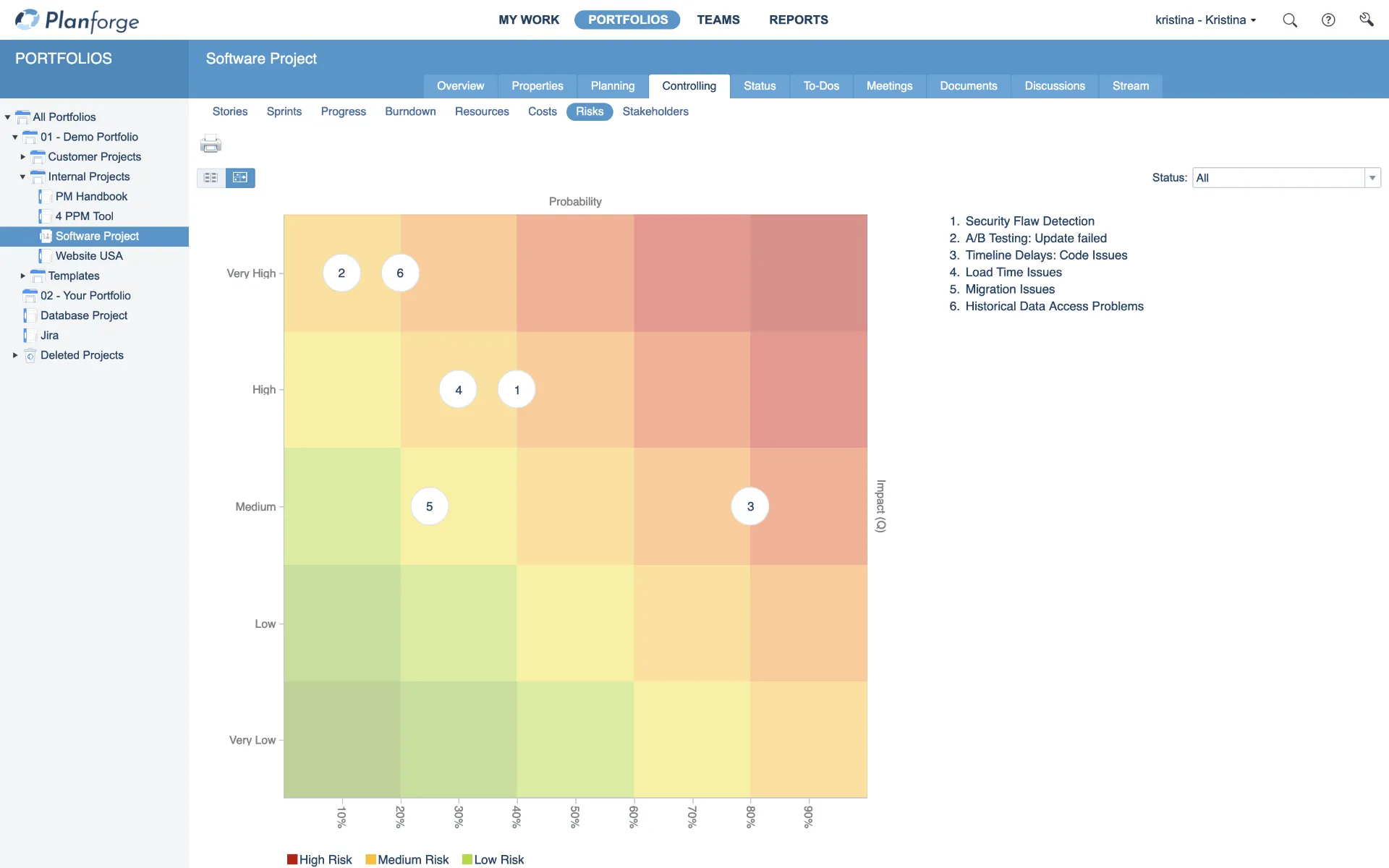Project and portfolio management software with integrated risk management for identification, analysis, and response planning.
Vendor
Planforge
Company Website

Planforge Risk Management is a module within Planforge’s hybrid project and portfolio management (PPM) software, enabling professional management of project risks. It supports risk identification, evaluation, response planning, and continuous risk controlling. Global risk categories can be defined for comparability across projects, and risks are visualized using automatically generated bubble charts and customizable reports.
Key Features
Risk Identification and Evaluation
- Early identification of risks during project start
- Assignment of risk-related activities to project plans
- Description, probability, and impact assessment for each risk
Risk Response Planning and Control
- Response planning integrated into project workflows
- Continuous risk controlling with real-time updates
- Shorter reaction times and increased transparency
Cross-Project Risk Management
- Definition of global risk categories for comparability across projects
- Use of synergies and lessons learned from other projects
Risk Visualization and Reporting
- Automatically generated bubble charts for risk visualization
- Customizable risk reports for management decisions
Integration and Flexibility
- Seamless integration with other Planforge project management features
- Adaptable to various project management methodologies (traditional, agile, hybrid)
Benefits
Improved Project Outcomes
- Minimizes uncertainties and unidentified risks
- Reduces risk probability and impact through early action
- Increases the likelihood of project success
Efficiency and Transparency
- Faster reactions and shorter processing times
- Transparent risk management processes
- Efficient support for management decisions
Organizational Learning
- Cross-project risk comparison and knowledge sharing
- Continuous improvement through feedback and reporting